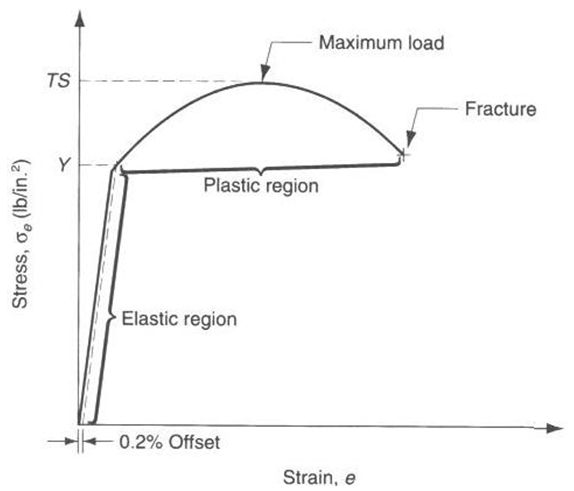ENGINEERING 2 PRODUCTION, INC.
The Mechanical Testing Department at E2P is well equipped to perform most standard mechanical testing,
as well as specialized tests designed to the customer's requirements.
A complete in-house machine shop supports the department with precise specimen preparation and fixture fabrication

|
HARDNESS TEST
Hardness is the property of a material that enables it to resist plastic deformation, usually by penetration.
However, the term hardness may also refer to resistance to bending, scratching, abrasion or cutting.
Several methods of hardness Testing are standardized.
Such methods such as Rockwell Hardness Test, Rockwell Superficial Hardness Test, Brinell Hardness Test,
Vickers Hardness Test, Microhardness Test, and Mohs Hardness Test.
Hardness is not an intrinsic material property dictated by precise definitions in terms of fundamental units of mass, length and time.
A hardness property value is the result of a defined measurement procedure.
Hardness of materials has probably long been assessed by resistance to scratching or cutting.
An example would be material B scratches material C, but not material A.
Alternatively, material A scratches material B slightly and scratches material C heavily.
Relative hardness of minerals can be assessed by reference to the Mohs Scale that ranks the ability of materials to resist scratching by another material.
Similar methods of relative hardness assessment are still commonly used today. An example is the file test where a file tempered to a desired hardness is rubbed on the test material surface.
If the file slides without biting or marking the surface, the test material would be considered harder than the file.
If the file bites or marks the surface, the test material would be considered softer than the file.
The above relative hardness tests are limited in practical use and do not provide accurate numeric data or scales particularly for modern day metals and materials.
The usual method to achieve a hardness value is to measure the depth or area of an indentation left by an indenter of a specific shape, with a specific force applied for a specific time.
There are three principal standard test methods for expressing the relationship between hardness and the size of the impression, these being Brinell, Vickers, and Rockwell.
For practical and calibration reasons, each of these methods is divided into a range of scales, defined by a combination of applied load and indenter geometry.
Hardness conversion between different methods and scales cannot be made mathematically exact for a wide range of materials.
Different loads, different shape of indenters, homogeneity of specimen, cold working properties and elastic properties all complicate the problem.
All tables and charts should be considered as giving approximate equivalents, particularly when converting to a method or scale which is not physically possible for the particular test material and thus cannot be verified.
An example would be converting HV/10 or HR-15N value on a thin coating to the HRC equivalent.
|
|

|
CHARPY IMPACT TEST
Destructive mechanical test in which a pendulum hammer (swinging through a fixed distance) fractures a standard size notched piece of material with one blow.
It indicates how the material will respond to suddenly applied shock (stress) by measuring the energy absorbed in breaking the piece.
The test results are expressed in foot-pounds or kilojoules.
Various types of notched-bar impact tests are used to determine the tendency of a material to behave in a brittle manner.
This type of test will detect differences between materials which are not observable in a tension test.
The results obtained from notched-bar tests are not readily expressed in terms of design requirements,
since it is not possible to measure the components of the triaxial stress condition at the notch.
The Charpy specimen has a square cross section (10 x 10 mm) and contains a 45° V-shaped notch, 2 mm deep with a 0.25 mm root radius.
The specimen is supported as a beam in a horizontal position and loaded behind the notch by the impact of a heavy swinging pendulum.
The specimen is forced to bend and fracture at a high strain rate.
|
|

|
TENSILE TEST
A tensile test, also known as tension test, is most widely used to determine several mechanical properties of materials that are important in design.
Tensile testing is one of the most fundamental type of mechanical tests performed on a material. It is simple, relatively inexpensive, and fully standardized.
By pulling on a test specimen, the material is deformed until it fractures. As the specimen is pulled the specimen elongation and applied load is measured.
Strain and stress are calculated from these values, and are used to construct a stress-strain curve.
From this curve, the elastic modulus and yield strength are determined.
The highest load in the tensile test gives the tensile or ultimate strength.
After fracture, the final length and cross-sectional area of the specimen are used to calculate the percent elongation and percent reduction of area respectively.
These quantities indicate the ductility of the material.
By using the instantaneous length and cross-sectional area, the true stress and true plastic strain are calculated from the load and elongation.
The strain hardening properties of the material are then determined from a log-log plot of the true stress vs. the true plastic strain.
|
|


